Butterflies, with their intricate patterns and vivid hues, are not just a marvel of nature but also a popular subject for artists and enthusiasts of all ages. In this article, we delve into the fascinating world of butterfly coloring pages, a delightful and creative way to explore the beauty and diversity of these insects. Whether for educational purposes, stress relief, or simply as a leisurely activity, our butterfly coloring sheets offer a unique blend of artistic expression and nature appreciation. Join us as we unfold the colorful wings of imagination and creativity through the simple yet profound act of coloring.
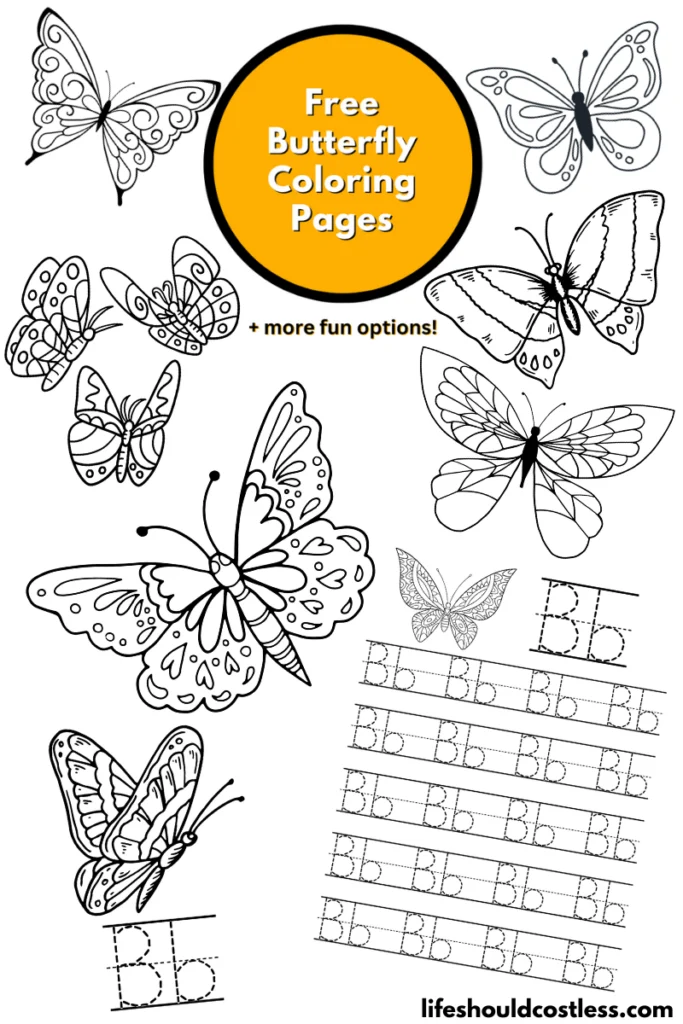
You are welcome to choose the design that resonates with you the most.
After making your selection, download the free PDF template, print it out, and immerse yourself in the pleasure of coloring as much as you wish.
Additionally, these designs can be used as patterns for embroidery or as inspiration for intricate fine line tattoo art.
Butterfly facts
If you’re exploring my coloring pages for the first time, I want you to let you in on a little secret…this is also the chance to learn about the subject matter.
This way, you can effortlessly transform your coloring session into an educational experience.
So, let’s get started!
Below, you’ll find a collection of fun and simplified facts about butterflies:
- Life Cycle: Butterflies go through a remarkable life cycle – egg, larva (caterpillar), pupa (chrysalis), and adult butterfly. This process is known as metamorphosis.
- Variety of Species: There are over 17,500 recorded butterfly species worldwide, each with unique patterns and colors.
- Vibrant Colors: Butterflies get their colors from two sources: pigments and structural color. The latter is when light reflects off microscopic scales on their wings.
- Sensory Perception: Butterflies taste with their feet. They have taste sensors on their legs to help them find their host plants and feed on nectar.
- Migration: Some species, like the Monarch butterfly, migrate long distances. Monarchs can travel thousands of miles from North America to central Mexico.
- Butterfly Vision: Butterflies can see a range of colors, including ultraviolet light, which is invisible to the human eye.
- Life Span: Most butterflies live a very short life, usually only a few weeks, although some species can live several months.
- Thermoregulation: Butterflies are cold-blooded and rely on external heat sources to warm their bodies. They often bask in the sun to warm up.
- Pollination: While feeding on nectar, butterflies pollinate plants. They play a vital role in the health of our ecosystem.
- Camouflage and Mimicry: Some butterflies have evolved to mimic the appearance of other species as a defense mechanism. Others blend into their surroundings to hide from predators.
- Flight Speed: Some butterflies are quite swift. The Monarch butterfly, for instance, can reach speeds ranging from 4 to 12 miles per hour (approximately 6.4 to 19.3 kilometers per hour).
- Host Plants: Each butterfly species has specific host plants where they lay their eggs. The caterpillars feed on these plants after hatching.
- Butterfly Gardens: Many people create butterfly gardens with specific plants to attract and support butterflies.
- Symbolism: In many cultures, butterflies symbolize transformation, hope, and life.
- Butterflies in Space: In 2009, butterflies were taken to space for an experiment in the International Space Station to see how they would develop in zero gravity.
- Wing Patterns: No two butterflies have exactly the same wing patterns, similar to human fingerprints.
- Group Behavior: A group of butterflies is often called a flutter, kaleidoscope, or swarm.
These facts only barely scratch the surface of the fascinating world of butterflies, showcasing their beauty, diversity, and importance in our ecosystem.
If you would like to continue learning, here are some trustworthy sources to check out about butterflies:
- https://en.wikipedia.org/wiki/Butterfly
- https://kids.nationalgeographic.com/animals/invertebrates/facts/monarch-butterfly
- https://www.pbslearningmedia.org/resource/nat36-int-butterflylifecycle/butterfly-life-cycle/
- https://www.si.edu/spotlight/buginfo/butterfly
- https://www.londonzoo.org/whats-here/habitats/butterfly-paradise/butterfly-facts
- To see all of my free printables, go here.
- If you would like to see my index of free printable coloring pages, go here!
- To see all of my animal coloring pages, go here.
- To see all of my insect-related coloring pages, go here.
Coloring tips
Coloring pictures of butterflies can be both a relaxing and creatively enriching activity.
Here are some of my best tips and tricks to enhance your butterfly coloring experience:
- Understand Butterfly Anatomy: Familiarize yourself with the basic structure of butterflies. Knowing where the wings, body, antennae, and other parts are can help you color more accurately and creatively.
- Use Reference Images: Look at pictures of real butterflies for inspiration. This can help you understand their natural color patterns and wing designs.
- Start with Light Colors: Begin with lighter shades and gradually add darker colors. This technique allows for easier correction of mistakes and layering for depth and shading.
- Experiment with Color Combinations: Butterflies are known for their vibrant colors. Don’t be afraid to use a wide range of hues and experiment with unusual color combinations.
- Add Details Gradually: Start with broader areas and then move to smaller details. This approach helps maintain the overall balance of colors.
- Use the Right Tools: Quality coloring pencils, markers, or paints can significantly affect your coloring experience. For detailed work, fine-tip pens or pencils are preferable.
- Blend Colors for Realism: Blend different colors to create gradients and more realistic effects, especially on the wings.
- Embrace Symmetry: Many butterfly wings are symmetrical. Try to replicate the pattern you color on one wing on the other.
- Use Shading and Highlighting: Add depth to your coloring by shading darker areas and highlighting lighter areas. This can give a 3D effect to the butterfly.
- Incorporate Background Elements: Consider the background. Adding flowers, leaves, dew drops, or a sky can make your butterfly stand out and create a more complete picture.
- Relax and Enjoy: Remember, the primary goal is to enjoy the process. Don’t worry about perfection. Let your creativity flow and enjoy the therapeutic benefits of coloring.
- Try Different Techniques: Experiment with different coloring techniques like cross-hatching, stippling, or scumbling to add texture to your butterfly.
- Keep a Scrap Paper: Test your colors and blends on a separate piece of paper before applying them to your main piece. This will help you get the right shade and avoid mistakes.
- Pay Attention to Light Source: Consider where the light in your picture is coming from. This will help in adding realistic shadows and highlights.
- Stay Inspired: Keep your enthusiasm high by trying to color different butterfly species and styles. Each one offers a new opportunity for creativity and learning.
Above all, enjoy the process of bringing these beautiful creatures to life with your colors!
Options For Printing:
Letter B is for butterfly writing practice worksheets
*My letter B is for butterfly coloring sheet printables available here are specially crafted for use in classroom environments.
They are the exclusive printables on this page that can be utilized in public settings without the need for written permission.
However, if someone inquires about their origin, kindly share the link to this post with them.
Thank you!
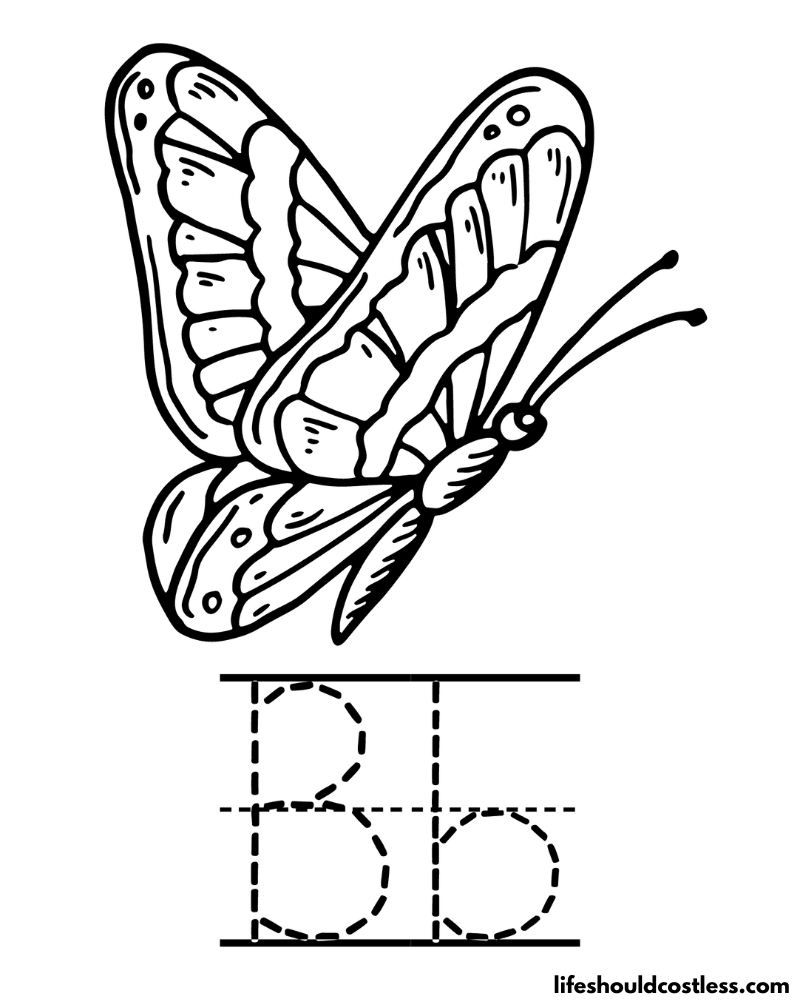
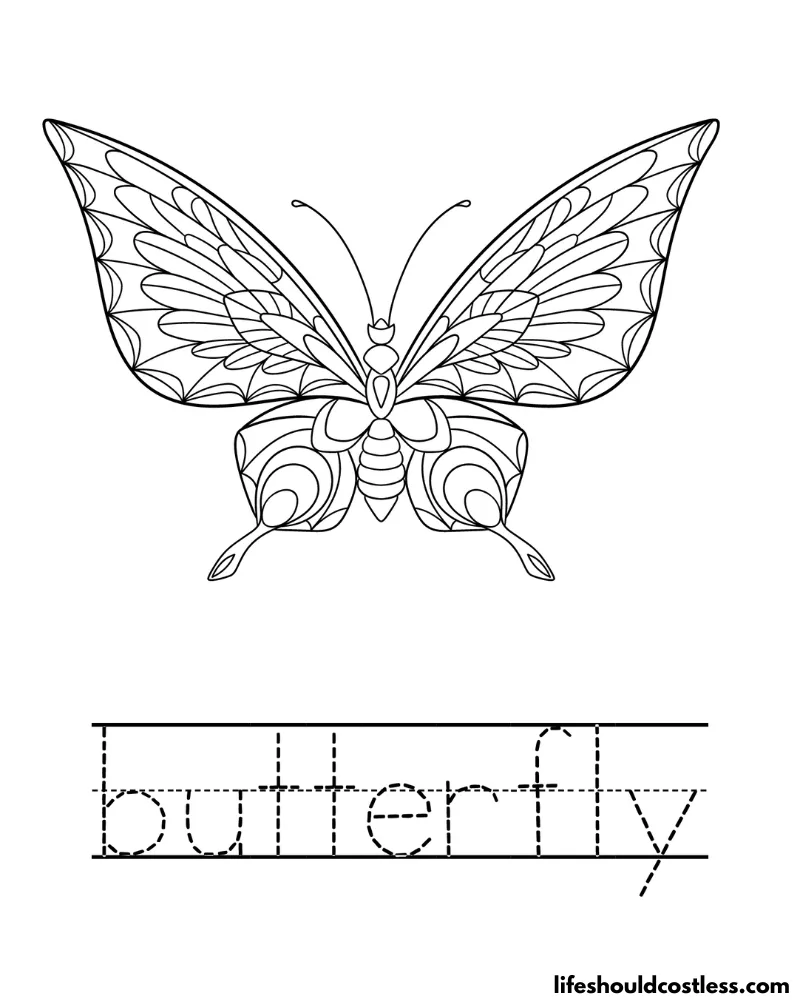

Various butterfly designs
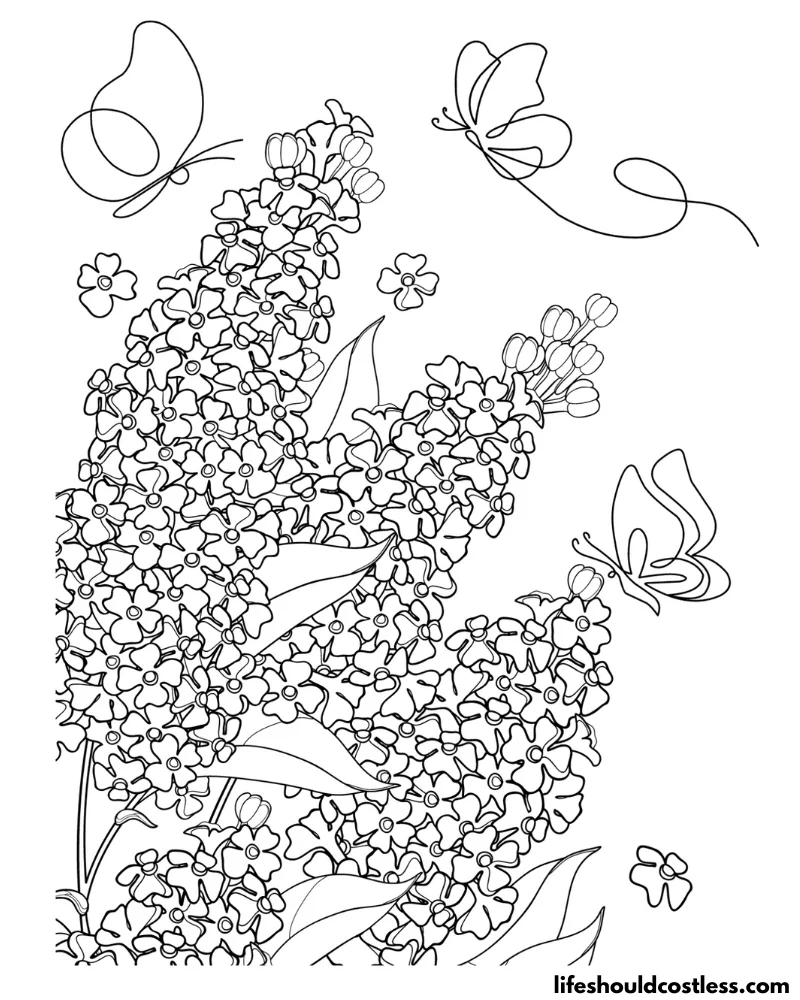

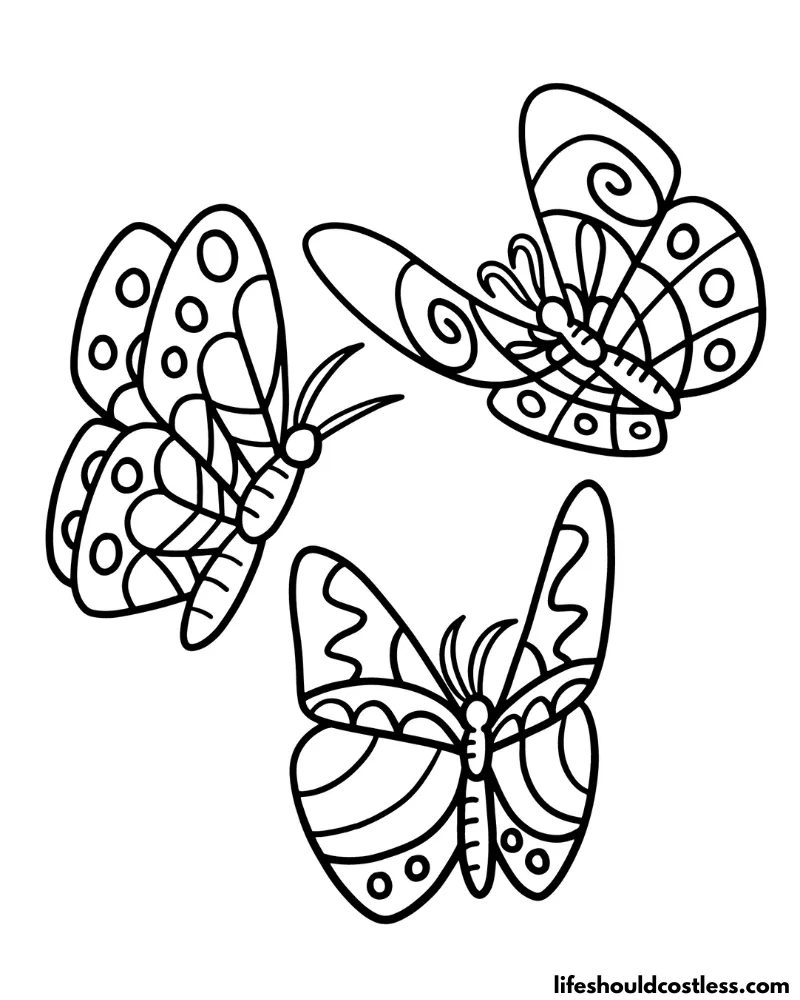
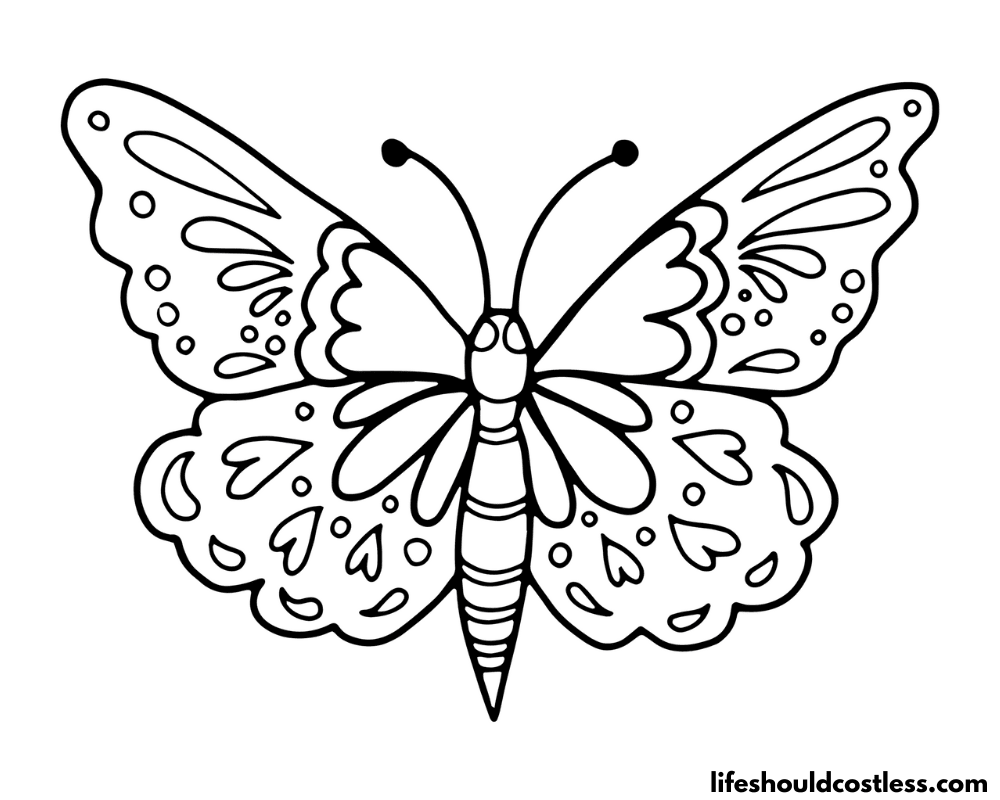
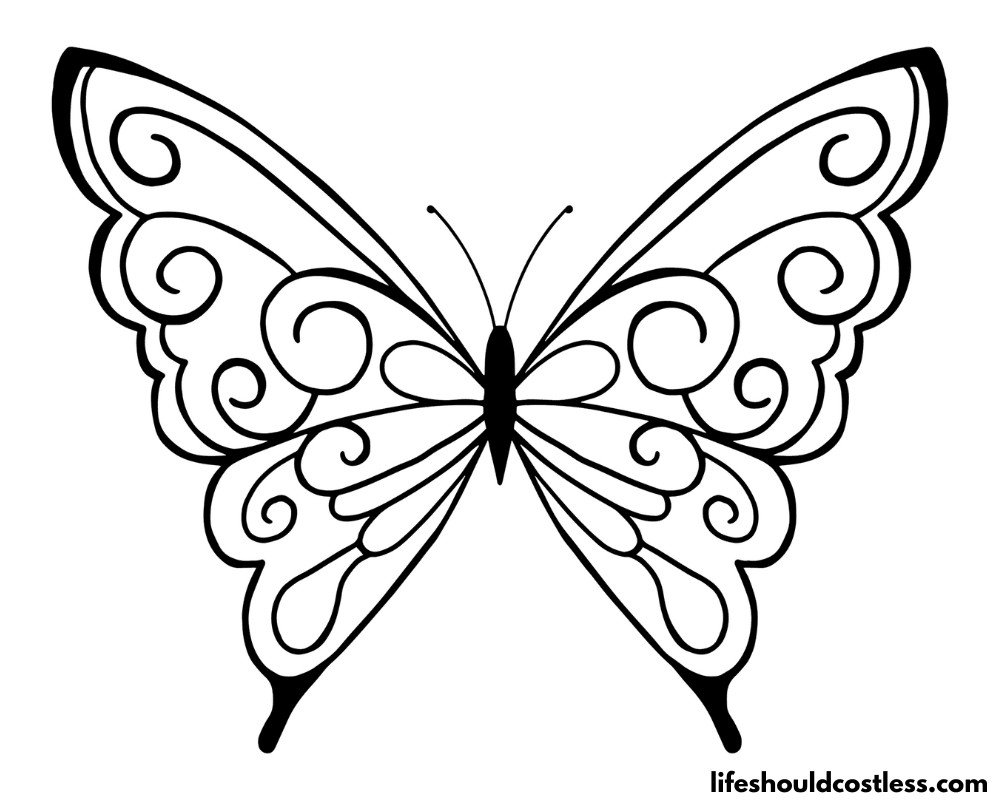
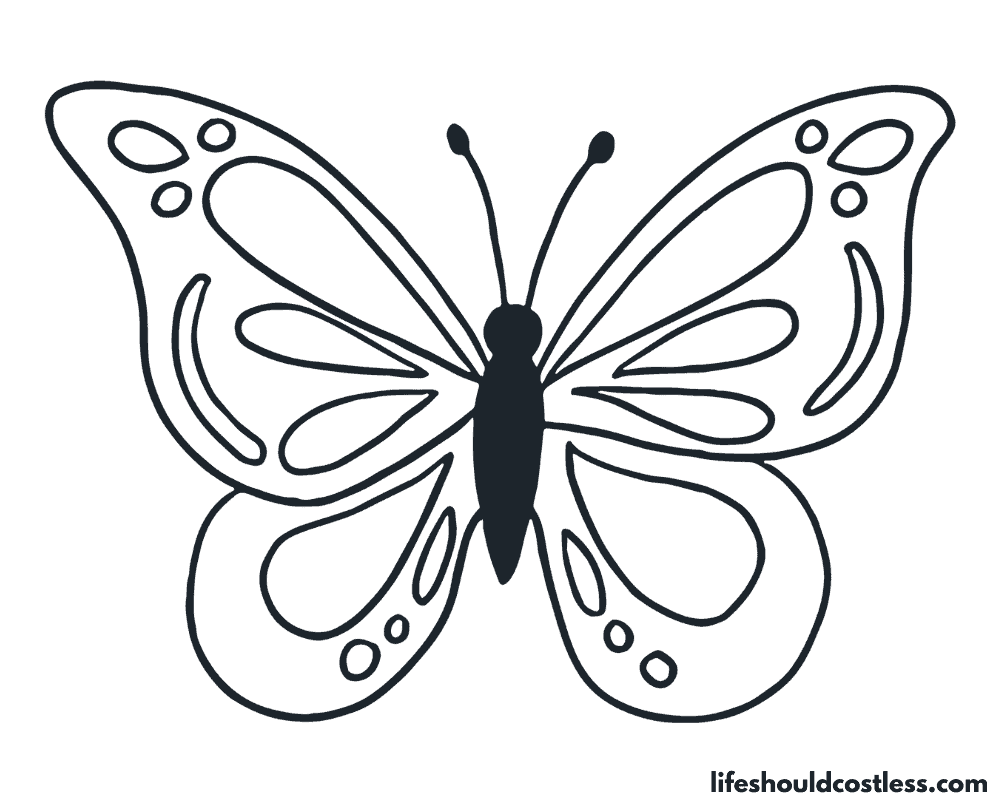
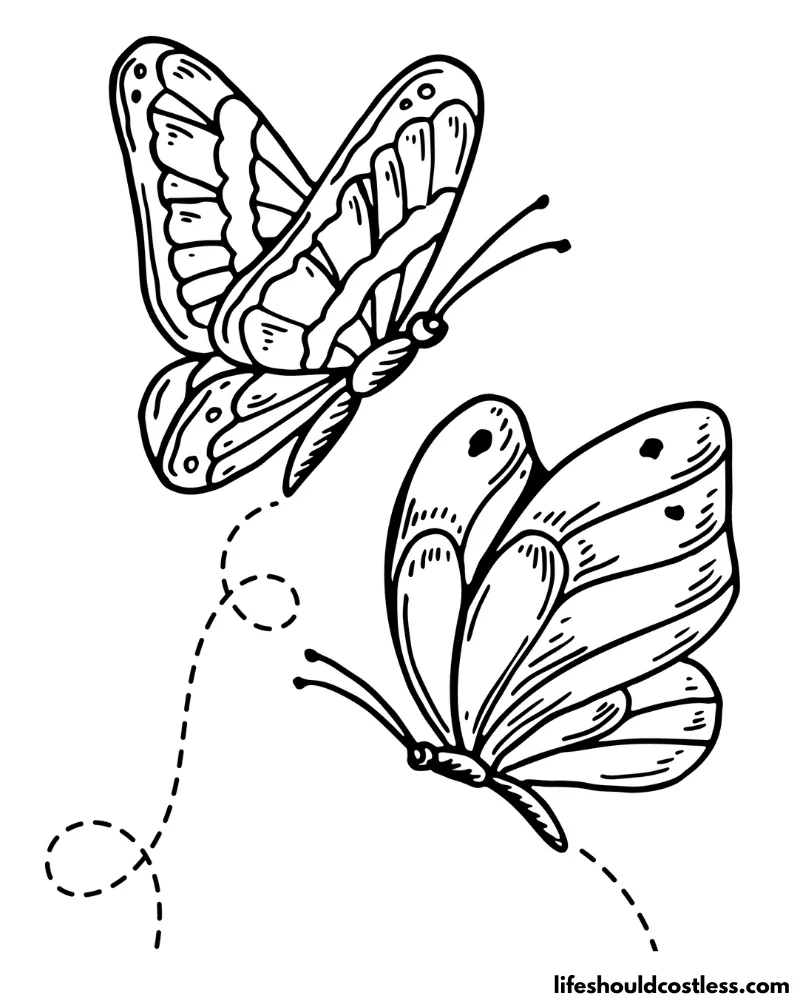
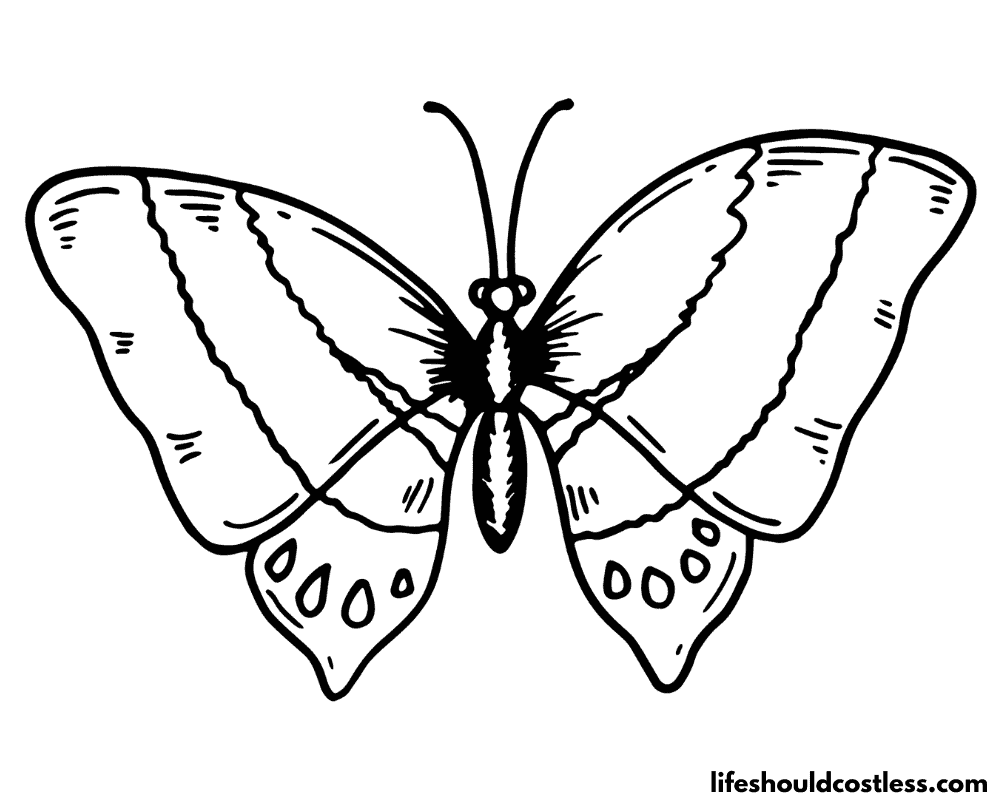
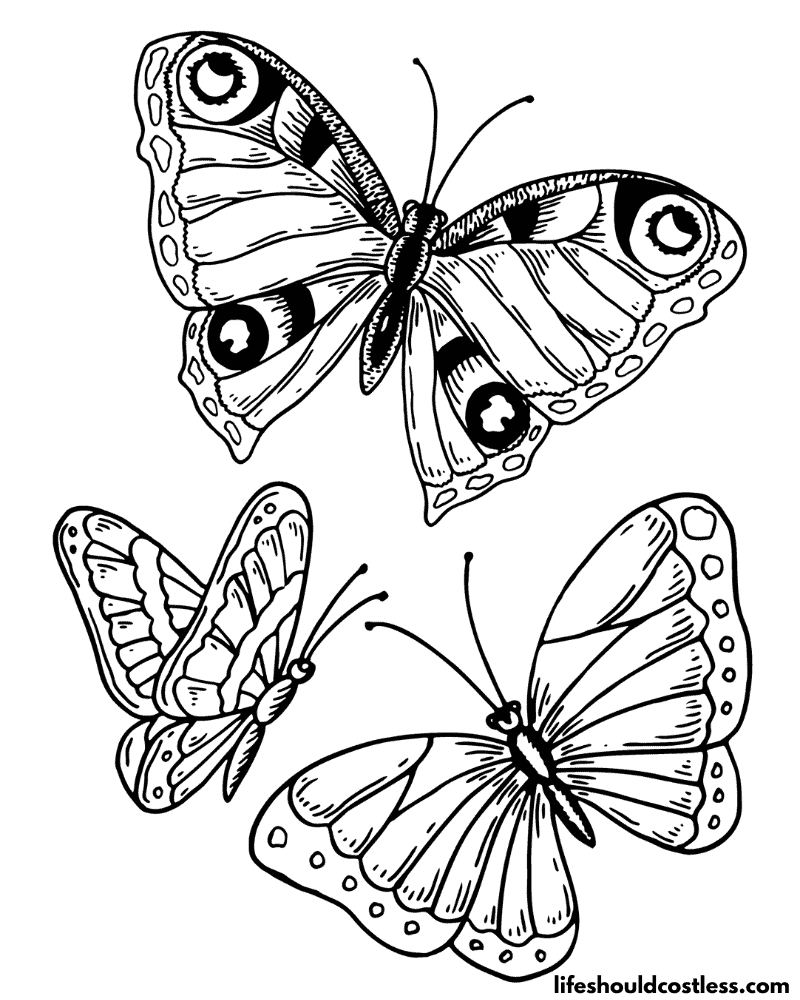
FAQ’s
Butterflies are known for their vibrant and diverse coloration.
The most typical colors observed in butterflies include:
Blues: Ranging from sky blue to navy, often seen in species like the Blue Morpho.
Yellows and Oranges: Common in varieties such as the Monarch and the Sulphur butterflies.
Reds: From bright red to deep maroon, frequently found in species like the Common Postman.
Greens: More rare, but present in some species like the Green Swallowtail.
Browns and Tans: Common in many species, often used for camouflage, like in the Owl Butterfly.
Whites and Creams: Seen in species like the Cabbage White.
Blacks and Grays: Often used in combination with other colors for patterns, seen in butterflies like the Black Swallowtail.
These colors can appear in various patterns and combinations, contributing to the incredible diversity and beauty of butterflies.
It’s also worth noting that some butterfly wings may appear to change color or have iridescent qualities due to the way light reflects off the microscopic scales on their wings.
*I will add more butterfly colour / color questions and answers as the questions get sent to me.
Conclusion
In conclusion, our butterfly coloring pages provide a fascinating opportunity for artistic expression and a deeper appreciation of one of nature’s most exquisite specimens.
Engaging in this simple yet fulfilling activity allows us to connect with the diverse and vivid world of butterflies.
These pages serve as more than just a pastime; they are educational tools, a source of relaxation, and a springboard for artistic inspiration.
They highlight the beauty of diversity and underscore the significance of protecting and understanding our natural environment.
So, gather your coloring tools, unleash your creativity, and bring these pages to life, echoing the transformative journey of a caterpillar into a butterfly.
Thanks so much for stopping by my blog and supporting my endeavors to make people’s lives a little easier/better/more affordable.
If you liked this post, or found it helpful in any way, please make sure to share it with your family, friends, and co-workers via social media….
Or you could even send them the direct link via email. Whichever way you choose to spread the love, I super appreciate it! ~Sarah
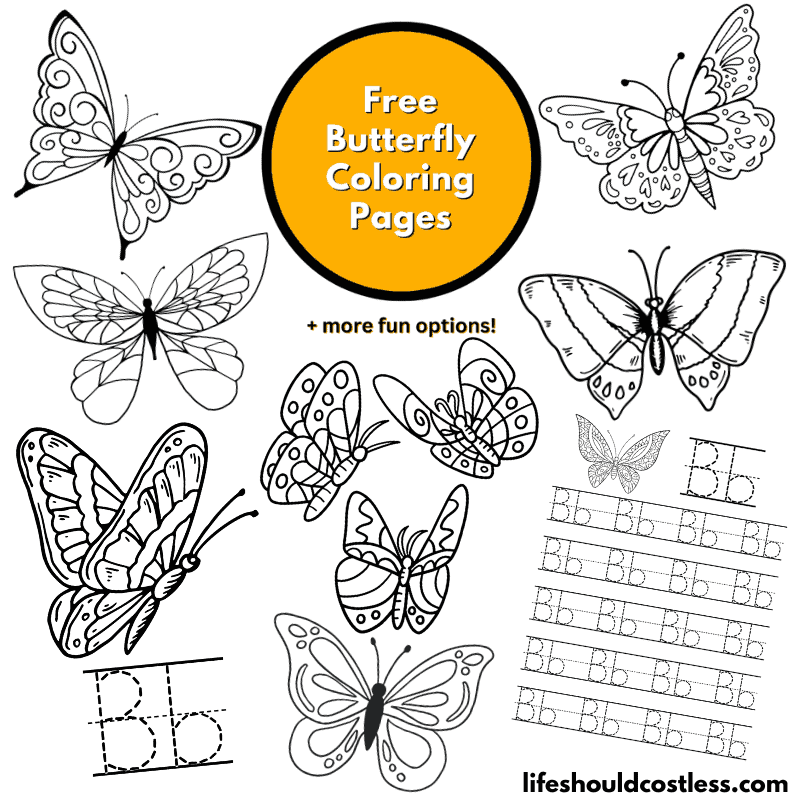
How To Follow & Support This Site
- If you would like to subscribe to my email list, go here.
- Make sure to follow along via social media, by going here.
- If you would like to learn how to really show your support to this site (at no cost to you), go here.
- If you would like to make a direct donation to the site, go here.
Check out my other free printables
- To see all of my free printables, go here.
- If you would like to see my index of free printable coloring pages, go here!
- To see all of my animal coloring pages, go here.
- To see all of my insect-related coloring pages, go here.
Otherwise, here are direct links to several of my other related posts that you’re also going to love:
Animals / Insects
Animals / Birds
Animals / Mammals
Other good resources for a printable butterfly
- https://www.coloring.ws/butterfly1.htm
- https://www.bigactivities.com/coloring/insects/butterflies/monarch_butterfly.php
- https://www.first-school.ws/theme/animals/cp_insects/cp_butterfly.htm
*This post was originally shared to this blog on 01/22/2024, and has since been updated to improve user experience, as well as to make it as shareable as possible across the social medias.
**Please note that I do try my hardest to provide factual, but easy to understand, information about each topic. If you notice a discrepancy in my coloring pages, facts, or see something that you deem “misinformation/incorrect” please make sure to notify me about it. I would prefer that you send me an email with a link to a more reputable resource on that subject, so that I can correct it as soon as possible. Thanks so much for helping this site become the best that it can be!
***Resources from djinkers were used in the production of this article.
